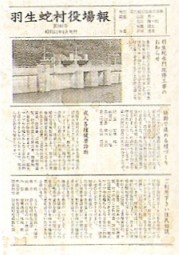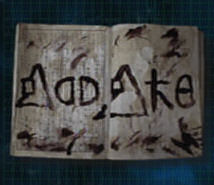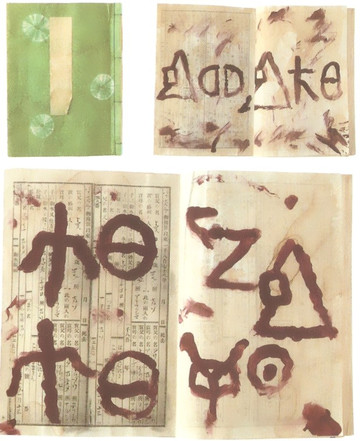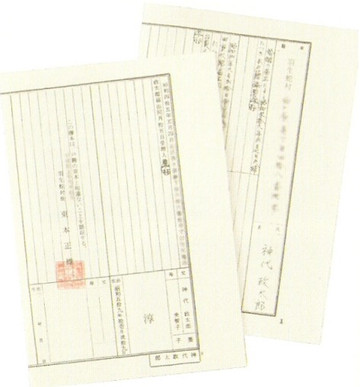[No.023] Hanuda Town Hall News

A copy of the town hall news published in June 1976. It informs of reparations to be performed on the Hanuda floodgates, scheduled to start that September along the upper portion of the Mana river. From content, "emergency construction has been scheduled in response to flooding due to the overflowing of the Mana river", the entire region in which Hanuda Village is located has long been an area in which natural disasters are commonplace. In actuality that August, the month before repairs were due to be carried out, the portion of the village containing the floodgates was sucked into the "Other World", disappearing from the real world (on the surface it appeared to have vanished when caught in a landslide). It seems as though in the end, rather than being "repaired" the floodgates had to be rebuilt from scratch. At the end of Siren is a scene in which the Mana river floodgates are blown up by Makino (Miyata), destroyed by water from the reservoir - the floodgates shown here are the old (pre-reparations) ones from August 1976.


[No.024] List of Church Members

A list of church members held by Guiding Nun Hisako Yao at the Irazu Valley church. It contains a list of the names of generations of believers in Manaism in careful writing, but what should be taken note of here are the large shibito characters written over the top on the pages. The information contained within says "mezame yo" ("awaken") in shibitese (there is also another, more direct version that instead says "AWAKE", but this was unused in the final game). In Chapter 4 of the sidestory "Strange Tales of Hanuda", the Kajiro family maid Sumiko (also Hisako Yao), says, "Sometimes I even forget myself. Who I am..." which probably refers to this. Cursed after committing the sin of consuming the flesh of the god (Datatsushi) in 684 AD, Hisako has since lived, "immortal", for more than 1300 years. However, due to living for such a long time she has separated into a complex array of names and appearances, her personality unstable and she herself not even knowing who she is. Because of this, so as not to forget her goal of resurrecting Datatsushi through the forbidden ritual, she writes "awaken" on the list of church members she looks at often, a constant warning to herself. You can actually see a scene of the fairly absentminded Hisako checking the list in the game itself. Incidentally, when she meets Kyoya for the first time on Day 1, Hisako - as the selfless Guiding Nun who dedicates herself to the people - kindly watches out for him and later draws to a close her plan to resurrect Datatsushi, quite contradicting actions. If you consider these things to be another representation of the other faces Hisako Yao hides within, everything has an explanation.


[No.025] Copy of Jun Kajiro's Family Register

A copy of a family register from Hanuda Village Town Hall. The information inside shows that Jun was adopted into the Kajiro family, and that Miyako doesn't exist according to the registry. Also, the Kajiros, the oldest family in Hanuda Village, have only given birth to female children since perpetrating a sin and being cursed with immortality long ago. Due to this they constantly need to bring in males from outside the family, repeating with each generation. As shown by the family register the current Kajiro family head is Masataro Kajiro, who was also brought from outside and married into the Kajiros. Masataro's wife Sayako (the mother of Ayako and Miyako) herself has the curse of immortality, one of the Kajiro descendants who served the role of remaining in the real world at the "rite of holy matrimony". The previous Miyako Kajiro, who was supposed to have been offered up to the Other World along with Sayako in 1976, is seen escaping from the Kajiro house in chapter 2 of "Strange Tales" (however, since the 1976 ritual ended in failure, Previous Miyako also ended up remaining in the real world unexpectedly).
Also, since the elder of the sisters, who stays in the real world, is cursed as a member of the Kajiro family, she will never die however much she ages. Because of this, those of each generation of Kajiros... even as their flesh rots and they experience hellish suffering, they are unable to die. To keep this hidden, they are covered up as having "died" to the outside world, finally being imprisoned in the underground path below the Kajiro house, living eternally in the silent darkness. Even as their bodies decompose and their consciousness all but melts into nothing, they are unable to feel the relief of death, perhaps victims of the laws of cause and effect in Hanuda Village.


English Translation by Chelsea

